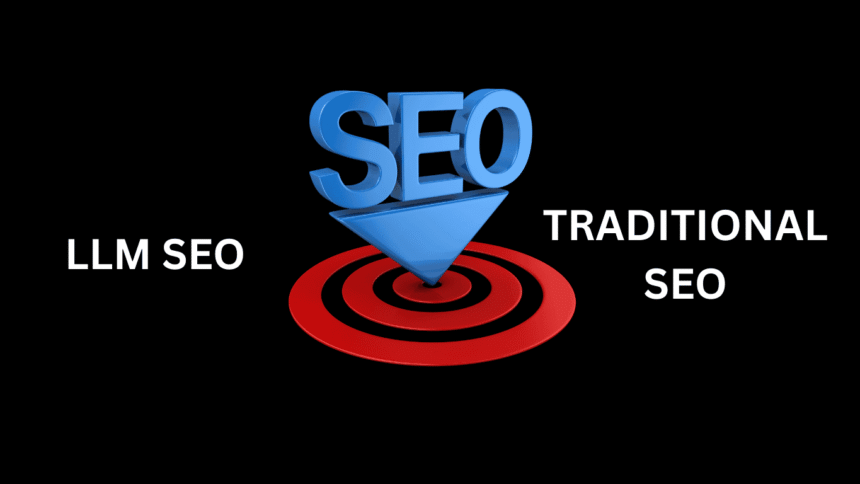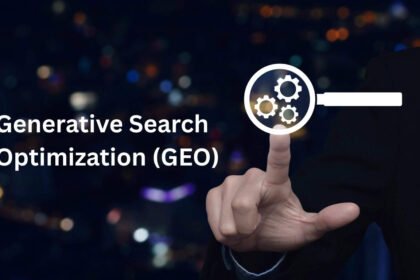So, search engines are changing, right? It feels like everyone is talking about AI and how it’s going to take over everything. People are asking questions on things like ChatGPT instead of just Googling. This means what worked for getting found online before might not work as well now. We need to think about how to get our stuff seen by these new AI tools. It’s a big shift, and understanding LLM SEO vs Traditional SEO is key to staying visible.
Key Takeaways
- LLM SEO helps large language models like ChatGPT and Gemini find and use your content.
- It’s different from traditional SEO because the goal is to be mentioned in AI answers, not just ranked on a search page.
- Making your content clear, well-organized, and trustworthy is important for AI to pick it up.
- LLM SEO builds on what you already do for traditional SEO, so don’t stop doing that.
- Getting started with LLM SEO now gives you an edge because many people aren’t focused on it yet.
Understanding The Shift: LLM SEO vs Traditional SEO
Search has changed and so has how we need to think about getting found online. For years, we’ve focused on traditional Search Engine Optimization (SEO). This meant making sure our websites ranked high on search engine results pages (SERPs) for specific keywords. Think of it as a competition for the top spot, measured by things like keyword positions and click-through rates. The goal was to get people to click on our blue links.
The Evolving Search Landscape
Now, things are different. People are increasingly turning to Large Language Models (LLMs) like ChatGPT, Gemini, and Perplexity for answers. Instead of sifting through ten blue links, users ask direct, conversational questions and expect a single, clear response.
This shift means that even if your content ranks well in traditional search, it might not be seen if it’s not being picked up by these AI models. It’s like having a great store on a busy street, but now everyone is getting their information from a new, popular town crier.
Defining LLM SEO and Its Purpose
LLM SEO is all about making your content understandable and trustworthy for these AI models. The purpose isn’t just to rank, but to get cited or included within the AI’s generated answers. Success here is measured by visibility within AI responses, even if a user doesn’t click through to your site.
It’s about ensuring your brand’s information is a reliable source that AI can confidently use and reference. We want these AI systems to say, “According to WebFandom, …”
Key Differences in Optimization Focus
While both traditional SEO and LLM SEO aim to connect users with information, their focus differs significantly. Traditional SEO often centered on:
- Keyword targeting: Using specific keywords to match search queries.
- Backlinks: Building authority through links from other websites.
- Click-through rates: Driving traffic directly to your site.
LLM SEO, on the other hand, prioritizes:
- Conversational language: Writing in a natural, question-like style.
- Content structure: Using clear headings, FAQs, and lists for easy AI parsing.
- Authority and trust signals: Demonstrating E-E-A-T (Experience, Expertise, Authoritativeness, Trustworthiness) and transparent sourcing.
- Semantic understanding: Using related terms and context rather than just exact keywords.
The core idea is shifting from optimizing for search engine crawlers to optimizing for AI comprehension. It’s about making your content so clear and well-supported that an AI can confidently use it as a source, much like a human researcher would.
Here’s a quick look at the main distinctions:
| Feature | Traditional SEO | LLM SEO |
|---|---|---|
| Primary Goal | Rank high in search engine results pages (SERPs) | Be cited within AI-generated answers |
| Key Metric | Keyword rankings, clicks, organic traffic | Mentions in AI responses, AI visibility |
| Content Style | Often keyword-focused, structured for bots | Conversational, natural language, question-oriented |
| Authority Signal | Backlinks, domain authority | E-E-A-T, transparent sourcing, original insights |
| User Behavior | Sifting through multiple links | Getting direct answers from AI |
Ignoring this shift means risking a loss of visibility as more searches are answered directly within AI interfaces.
Core Principles of LLM SEO
When we talk about LLM SEO, it’s not just about stuffing keywords or building links anymore. It’s about making your content so clear and useful that AI models naturally want to pull from it. Think of it as becoming the go-to source for a specific topic, not just for people, but for machines too. This means shifting our focus to how AI actually processes information.
Writing Conversational and Contextual Content
Large language models are designed to understand and generate human-like text. This means the content they prefer is also human-like. Instead of stiff, formal language, aim for a natural, conversational tone. Imagine you’re explaining something complex to a friend, that’s the vibe.
This approach helps AI models grasp the nuances and context of your information more easily. The goal is to answer questions directly and clearly, as if you were having a conversation.
Leveraging Semantic and Natural Language
LLMs don’t just look for exact keyword matches. They understand the meaning behind words and the relationships between concepts. This is called semantic understanding.
So, instead of repeating the same keyword over and over, focus on using a variety of related terms and phrases that naturally explain your topic. Think about synonyms, related concepts, and the overall context of the subject. This helps AI models build a richer understanding of your content.
Natural language processing is key here. This means writing in a way that flows smoothly and makes sense to a human reader. Avoid overly technical jargon unless it’s absolutely necessary and explained well. The clearer and more natural your language, the better an LLM can interpret and use your content.
Structuring Content for AI Comprehension
How you organize your content significantly impacts how easily an AI can understand and extract information from it. LLMs favor content that is well-structured and easy to parse. This includes:
- Using clear headings and subheadings: Break down your content into logical sections. This helps AI models identify different topics and sub-topics within your text.
- Employing bullet points and numbered lists: These formats make information digestible and easy for AI to extract specific pieces of data or steps.
- Creating concise summaries or key takeaways: A brief overview at the beginning or end of a piece can help AI models quickly grasp the main points.
- Answering questions directly: If your content addresses a specific question, make sure the answer is prominent and easy to find.
Think of your content as a well-organized library. The easier it is to find a specific book or section, the more likely someone (or something) is to use it. For LLMs, this means clear organization and direct answers are paramount.
By focusing on these core principles, you’re not just optimizing for search engines; you’re making your content accessible and understandable to the AI models that are increasingly shaping how people find information.
Building Authority and Trust for AI
The Role of E-E-A-T Signals
Think of E-E-A-T (Experience, Expertise, Authoritativeness, Trustworthiness) as the bedrock for any content aiming to be recognized by AI. It’s not just about what you say, but who is saying it and how you prove it. For LLMs, this translates into how reliably they can source and verify information.
If your content is consistently cited, linked to, and associated with credible sources, AI models will start to see it as a dependable reference point. This means going beyond just having a good website; it involves demonstrating real-world experience and deep knowledge in your field.
Transparent Sourcing and Original Insights
AI models are getting smarter about spotting copied or rehashed information. To build trust, you need to show your work. This means clearly citing your sources, especially when presenting data or complex ideas. More importantly, offer original insights that can’t be found elsewhere.
What’s your unique take? What new connections can you make? Providing unique perspectives and clearly attributing information helps AI systems understand the origin and credibility of your content. This is how you move from being just another source to a trusted authority that AI models want to reference.
Maintaining Brand Presence and Consistency
Your brand’s reputation matters, even in the age of AI. AI models learn from the vast amount of data available online, and a consistent, positive brand presence across different platforms helps them form a reliable impression. This includes:
- Consistent messaging across your website, social media, and any other online presence.
- Active engagement in relevant communities or forums where your brand is mentioned.
- Ensuring your brand’s core values and mission are reflected in all your content.
When AI systems encounter your brand repeatedly in a positive and consistent light, it reinforces your authority. It’s like building a digital reputation that AI can easily recognize and trust. Think of it as making sure your brand’s
Practical Strategies for LLM Optimization
So, how do we actually get our content noticed by these AI models? It’s not just about stuffing keywords anymore, that’s for sure. We need to think about how AI
Measuring Success in the New Era
Okay, so we’ve talked about how to get your content noticed by these AI models, but how do you actually know if it’s working? It’s not quite as simple as checking your Google Analytics for keyword rankings anymore, is it? Things have definitely shifted.
Beyond Keyword Rankings and Clicks
Forget just watching those keyword positions and click-through rates. While those are still important for traditional search, they don’t tell the whole story with LLMs. Think about it: if an AI answers a question directly, no one might click through to your site. So, how do you measure that visibility? We need to look at different signals.
Tracking Visibility in AI-Generated Answers
This is where things get interesting. Some newer tools are popping up that specifically track how often your content appears in AI responses. Platforms like SEMrush are starting to show AI presence for pages, which is a good start. But you can’t just rely on tools. You’ve got to get your hands dirty too.
- Query AI models directly: Use the same questions your target audience would ask. See if your content is cited or used in the answers.
- Monitor referral traffic: Some AI tools link back to sources. Keep an eye on your analytics for traffic coming from these AI platforms.
- Track brand mentions: Even if an AI doesn’t link to you, a mention of your brand in an AI answer is still a win. It builds awareness.
It’s about being present and recognized in the AI’s knowledge base, not just appearing high in a list of blue links.
Emerging Metrics for LLM SEO
So, what else should we be watching? We need to think about engagement signals that show your content is genuinely useful. If people spend more time on your page, come back, or share it, that’s a good sign. LLMs often pick up on this engagement. It suggests your content is a trusted source.
Here’s a quick look at what to consider:
| Metric Category | Traditional SEO Focus | LLM SEO Focus |
|---|---|---|
| Visibility | Keyword Rankings | AI Answer Inclusion, Brand Mentions |
| Traffic | Clicks | AI Referrals, Direct AI Traffic |
| Engagement | Bounce Rate, Time on Page | Time on Page, Repeat Visits, Social Shares |
| Authority | Backlinks | Original Insights, E-E-A-T Signals, Consistency |
Basically, we’re moving towards measuring how well our content serves the AI’s need to provide accurate, helpful answers, and how that translates into real-world recognition for our brand.
Why LLM SEO Matters Now
It’s pretty clear that things are changing fast. Large language models, or LLMs, are becoming a really common way for people to find answers. Think about it: instead of typing a few keywords into a search bar and sifting through links, folks are asking direct questions to AI tools like ChatGPT or Gemini. This isn’t just a small trend; it’s a significant shift in how people interact with information online.
Rapid Adoption of AI Tools
We’re seeing more and more people turn to AI for their queries. Some reports suggest a good chunk of people in the US are already using AI tools more than traditional search engines. This means the way brands get noticed is changing. If your content isn’t set up for these AI models, you might be invisible to a growing audience. It’s like having a great store on a street that suddenly becomes a dead end – people just aren’t going there anymore.
The Risk of Losing Visibility
This is where LLM SEO becomes really important. Traditional SEO focused on getting your site to rank high in search results. LLM SEO, however, is about making sure your content gets cited or included in the answers AI provides.
If you’re not optimizing for these models, your competitors who might show up directly in AI responses, even if your own website ranks well in traditional search. You could be losing out on potential customers simply because your content isn’t easily understood or trusted by the AI.
Gaining a Competitive Advantage
Getting ahead of this curve is key. By focusing on LLM SEO now, you position your brand to be found where people are increasingly looking for information. It’s about making your content clear, conversational, and trustworthy so that AI models can easily use it.
This proactive approach means you’re not just keeping up; you’re building a stronger presence in the evolving digital landscape. Adapting early can give you a significant edge over businesses that stick only to older methods. It’s about future-proofing your online presence and ensuring your brand stays relevant. You can start by looking at how to structure your content for better AI comprehension.
The shift towards AI-driven answers means that simply ranking well in traditional search results might not be enough anymore. Your content needs to be accessible and understandable to large language models to ensure continued visibility and relevance.
Wrapping It Up
So, large language models are definitely changing how people find stuff online. More and more, folks are asking questions directly to AI like ChatGPT or Gemini instead of just scrolling through Google results. This trend is only going to get bigger.
LLM SEO is basically how you keep up with this change. The old rules still kind of apply, good content, clear structure, and showing you know your stuff are still important. But you have to present it in a way these AI systems can actually use.
That means writing more like a normal conversation, answering questions straight up, and making sure your info is always up-to-date and trustworthy. It’s about making sure your brand is seen where people are looking now, not just where they used to look.
Frequently Asked Questions
What exactly is LLM SEO?
LLM SEO is like getting your website ready for smart AI helpers, such as ChatGPT or Google’s Gemini. Instead of just trying to show up high on a list of search results, it’s about making sure your content is so clear and trustworthy that these AI tools pick it to include in the answers they give to people.
How is this different from the old way of doing SEO?
Think of it this way: old SEO was about getting a good spot on a search results page. LLM SEO is about getting your information used directly within the AI’s answer. Both need good content, but LLM SEO focuses more on making the content easy for AI to understand and trust, like using natural language and clear answers.
Why should I care about LLM SEO right now?
Lots of people are starting to use AI tools like ChatGPT instead of regular search engines to find answers. If your content isn’t set up for these AI tools, you might miss out on being seen by potential customers. It’s about staying visible where people are looking for information today.
What makes content good for AI tools?
AI tools like clear, direct answers that sound like a real conversation. Using headings, lists, and answering common questions (FAQs) helps AI easily find and use your information. It’s also important to show that you’re a reliable source by citing where you got your information.
Does this mean I should stop doing regular SEO?
Not at all! Traditional SEO is still super important. Think of LLM SEO as building on top of it. You still need your website to be fast, easy to find by search engines, and have good keywords. LLM SEO just adds another layer to make sure you’re seen by AI too.
How do I know if my LLM SEO is working?
It’s not just about how many people click your links anymore. You need to see if your content is mentioned or used by AI tools. This might mean checking AI responses directly or using special tools that track your brand’s visibility within these AI systems.








